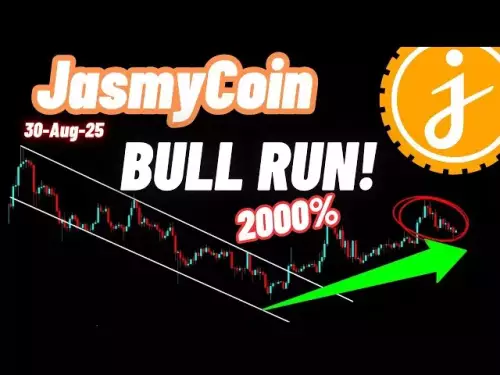-
 Bitcoin
Bitcoin $108800
0.43% -
 Ethereum
Ethereum $4353
0.12% -
 Tether USDt
Tether USDt $1.000
-0.01% -
 XRP
XRP $2.809
-0.56% -
 BNB
BNB $858.7
-0.02% -
 Solana
Solana $201.2
-1.21% -
 USDC
USDC $0.9999
0.00% -
 Dogecoin
Dogecoin $0.2153
1.48% -
 TRON
TRON $0.3385
0.33% -
 Cardano
Cardano $0.8194
-0.22% -
 Chainlink
Chainlink $23.37
0.07% -
 Hyperliquid
Hyperliquid $44.01
0.08% -
 Ethena USDe
Ethena USDe $1.001
0.01% -
 Sui
Sui $3.289
0.87% -
 Stellar
Stellar $0.3592
-0.16% -
 Bitcoin Cash
Bitcoin Cash $542.1
1.62% -
 Cronos
Cronos $0.3106
11.50% -
 Avalanche
Avalanche $23.74
1.06% -
 Hedera
Hedera $0.2256
-0.15% -
 UNUS SED LEO
UNUS SED LEO $9.496
0.22% -
 Litecoin
Litecoin $110.2
0.47% -
 Toncoin
Toncoin $3.125
2.15% -
 Shiba Inu
Shiba Inu $0.00001234
1.67% -
 Polkadot
Polkadot $3.791
0.69% -
 Uniswap
Uniswap $9.688
1.54% -
 Dai
Dai $0.0000
-0.01% -
 Bitget Token
Bitget Token $4.531
0.00% -
 Aave
Aave $316.4
1.13% -
 Monero
Monero $257.2
-0.14% -
 Ethena
Ethena $0.6525
2.68%
What is the difference between market cap and fully diluted valuation?
Market cap reflects a crypto's current value, while FDV estimates its future valuation if all tokens were circulating, aiding in assessing long-term risks and growth potential.
Aug 30, 2025 at 09:37 pm
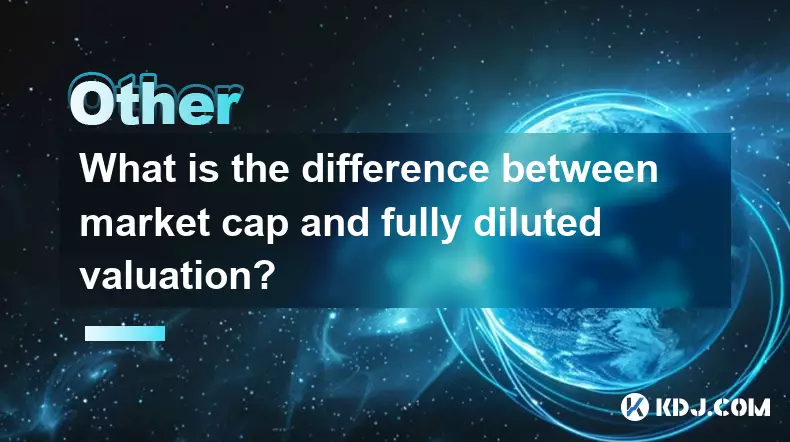
Understanding Market Capitalization in the Cryptocurrency Space
1. Market capitalization, often referred to as market cap, is a measure used to rank the relative size of a cryptocurrency. It is calculated by multiplying the current price of a single coin by the total number of coins in circulation. This metric provides investors with a snapshot of a project’s current market standing and is frequently used to compare different digital assets.
2. A high market cap typically indicates a mature and widely adopted cryptocurrency, such as Bitcoin or Ethereum. These assets tend to experience lower volatility compared to smaller-cap coins, making them a preferred choice for risk-averse investors. Market cap helps assess stability and investor confidence in a project.
3. The circulating supply plays a crucial role in determining market cap. Unlike traditional stocks, many cryptocurrencies have dynamic supply models, where new coins are released over time through mining or staking rewards. Therefore, market cap reflects the present value based on coins already available for trading.
4. Investors often rely on market cap to categorize cryptocurrencies into large-cap, mid-cap, and small-cap segments. This classification helps in portfolio diversification and risk management. Large-cap cryptos are generally considered safer investments due to their established track records and liquidity.
5. Market cap is a real-time indicator influenced by trading activity, investor sentiment, and macroeconomic factors. It reflects the actual market valuation of a project based on existing supply and demand dynamics.
Exploring Fully Diluted Valuation (FDV)
1. Fully diluted valuation (FDV) represents the total value of a cryptocurrency if all possible tokens were in circulation and sold at the current market price. It is calculated by multiplying the current price by the maximum supply or total supply, including coins that are locked, reserved, or yet to be released.
2. FDV provides a forward-looking perspective on a project’s potential market size. It helps investors understand the impact of future token releases on price stability and market dynamics. A high FDV relative to market cap may signal upcoming inflationary pressure.
3. Many early-stage projects have a low market cap but a significantly higher FDV. This discrepancy can mislead new investors who focus solely on market cap without considering the eventual supply expansion. Evaluating FDV allows for a more comprehensive risk assessment.
4. Tokenomics play a central role in FDV calculations. Projects with vesting schedules, team allocations, or ecosystem incentives often have large portions of their supply not yet circulating. These future releases can influence investor behavior and price trends once unlocked.
5. FDV acts as a cautionary metric, highlighting the potential dilution of value when all tokens eventually enter the market. It is particularly useful when analyzing projects with long-term emission schedules or inflationary models.
Comparing Market Cap and FDV in Investment Decisions
1. While market cap reflects current market conditions, FDV offers insight into long-term valuation ceilings. Investors analyzing both metrics gain a clearer picture of a project’s growth trajectory and potential risks associated with future supply increases.
p>2. A project with a low market cap but a very high FDV might appear undervalued initially, but could face downward price pressure as new tokens are introduced. This scenario is common in newly launched tokens with generous unlock schedules.
3. Some analysts use the ratio of market cap to FDV as an indicator of market maturity. A ratio close to 1 suggests most tokens are already circulating, while a low ratio indicates significant future supply remains unissued.
4. Market cap is more relevant for short-term trading decisions, as it aligns with actual trading volume and liquidity. FDV, on the other hand, is more strategic, aiding in long-term fundamental analysis and project sustainability evaluation.
5. Using both metrics together allows investors to balance immediate market perception with future economic structure, leading to more informed decisions in the volatile crypto landscape.
Frequently Asked Questions
What does a low market cap to FDV ratio indicate?A low ratio suggests that only a small portion of the total supply is currently in circulation. This can imply higher future selling pressure when locked or reserved tokens are released, potentially affecting price stability.
Can FDV be used to predict price drops?FDV itself does not predict price movements, but it highlights the potential for dilution. If a large number of new tokens are scheduled to enter circulation, investors may anticipate downward pressure on price, especially if demand does not keep pace.
Is market cap the best metric for evaluating a cryptocurrency?Market cap is essential but not sufficient on its own. It should be analyzed alongside trading volume, liquidity, tokenomics, and FDV to form a complete understanding of a project’s market position and potential risks.
Why do some projects have no maximum supply?Certain blockchains, like Ethereum, do not enforce a hard cap on supply. Instead, they use inflationary models to incentivize network participation. In such cases, FDV is either undefined or estimated based on projected emissions over a specific timeframe.
Disclaimer:info@kdj.com
The information provided is not trading advice. kdj.com does not assume any responsibility for any investments made based on the information provided in this article. Cryptocurrencies are highly volatile and it is highly recommended that you invest with caution after thorough research!
If you believe that the content used on this website infringes your copyright, please contact us immediately (info@kdj.com) and we will delete it promptly.
- Bitcoin, Space Station, and Fiat Collapse: Is Saylor Right About the Future?
- 2025-08-31 05:45:14
- XRP, DOGE, MAGAX: Unpacking the Hype and Predicting the Future
- 2025-08-31 06:05:16
- Crypto Presales: BlockchainFX, Bitcoin Hyper, and the Hunt for 500x Gains
- 2025-08-31 05:10:13
- Layer Brett vs. Dogecoin Pepe: The Meme Coin Evolution
- 2025-08-31 02:45:15
- Dogecoin, Staking Rewards, and Layer Brett: The Meme Coin Evolution
- 2025-08-31 02:45:15
- Pudgy Party: How Pudgy Penguins are Revolutionizing Web3 Gaming with Skins and PENGU Tokens
- 2025-08-31 03:05:12
Related knowledge

What are the risks of staking crypto?
Aug 30,2025 at 10:01pm
Risks Associated with Cryptocurrency Staking1. Market volatility can severely impact staked assets. The value of cryptocurrencies is highly unpredicta...

What is the Howey Test and its relevance to crypto?
Aug 31,2025 at 06:00am
Understanding the Howey Test in Financial Regulation1. The Howey Test originated from a 1946 U.S. Supreme Court case, SEC v. W.J. Howey Co., which est...
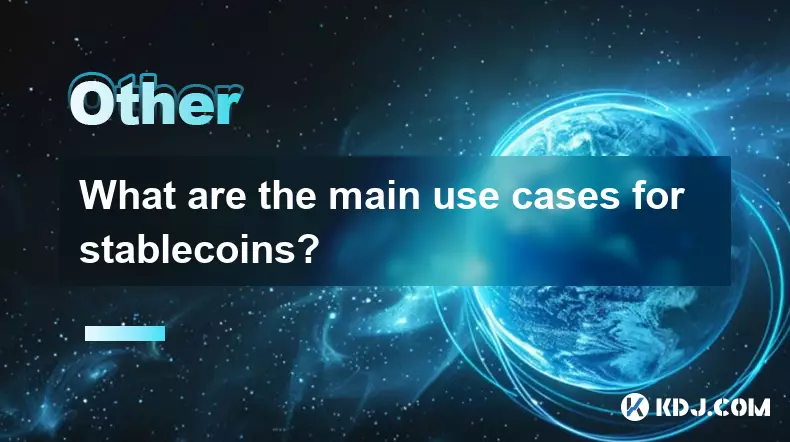
What are the main use cases for stablecoins?
Aug 30,2025 at 03:41am
Main Use Cases for Stablecoins 1. Stablecoins serve as a reliable medium of exchange in volatile cryptocurrency markets. Traders often convert their h...

What is a "vampire attack" in DeFi?
Aug 29,2025 at 09:36pm
Understanding the Concept of Vampire Attacks in DeFi1. A vampire attack in the decentralized finance (DeFi) space refers to a strategic effort by one ...
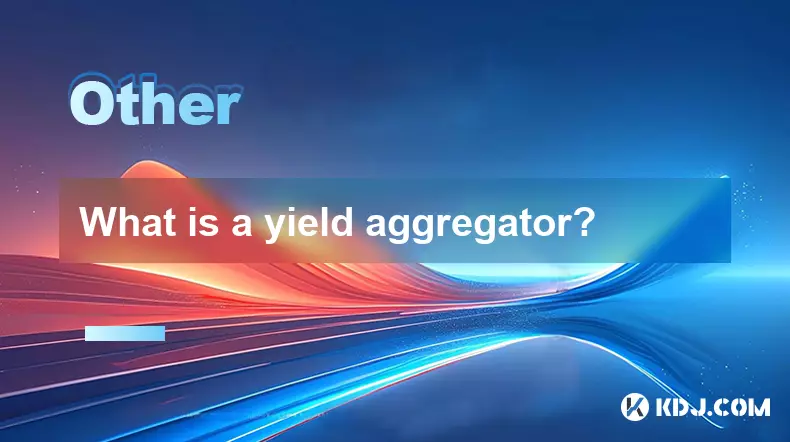
What is a yield aggregator?
Aug 30,2025 at 12:36pm
Understanding Yield Aggregators in the Crypto Space1. A yield aggregator is a decentralized finance (DeFi) platform designed to automate and optimize ...
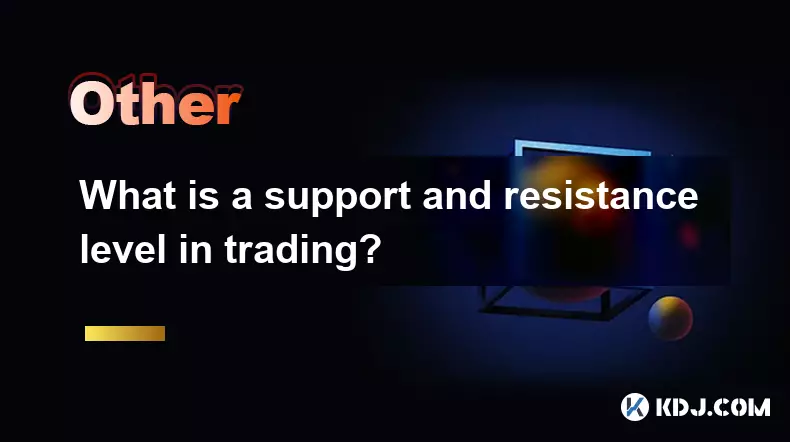
What is a support and resistance level in trading?
Aug 29,2025 at 07:00pm
Understanding Support and Resistance in Market Dynamics1. Support and resistance levels are foundational concepts in technical analysis, widely used b...

What are the risks of staking crypto?
Aug 30,2025 at 10:01pm
Risks Associated with Cryptocurrency Staking1. Market volatility can severely impact staked assets. The value of cryptocurrencies is highly unpredicta...

What is the Howey Test and its relevance to crypto?
Aug 31,2025 at 06:00am
Understanding the Howey Test in Financial Regulation1. The Howey Test originated from a 1946 U.S. Supreme Court case, SEC v. W.J. Howey Co., which est...

What are the main use cases for stablecoins?
Aug 30,2025 at 03:41am
Main Use Cases for Stablecoins 1. Stablecoins serve as a reliable medium of exchange in volatile cryptocurrency markets. Traders often convert their h...

What is a "vampire attack" in DeFi?
Aug 29,2025 at 09:36pm
Understanding the Concept of Vampire Attacks in DeFi1. A vampire attack in the decentralized finance (DeFi) space refers to a strategic effort by one ...

What is a yield aggregator?
Aug 30,2025 at 12:36pm
Understanding Yield Aggregators in the Crypto Space1. A yield aggregator is a decentralized finance (DeFi) platform designed to automate and optimize ...

What is a support and resistance level in trading?
Aug 29,2025 at 07:00pm
Understanding Support and Resistance in Market Dynamics1. Support and resistance levels are foundational concepts in technical analysis, widely used b...
See all articles























